I’ve been doubting if I should write this blogpost, but I decided to do it anyway.
Let me make one thing 100% clear, I don’t work for Sony. I use their cameras and that’s about it, at the moment I’m not even in their ambassadors program, so there is no “getting paid” to write reviews or what I’m doing today. However I think the following post can be of major importance for a lot of people to link to, so I decided to write it.
When I switched from Canon to Sony a lot of people said I was mad, and I agree it was a bold move going from a trusted and great working system to a new system with only one real professional camera, the A99, but I just loved something about that camera and I knew Sony would be coming up with something new in the coming years (they told me to just wait and be amazed), I also said at that time that it would not surprise me that in app. 10 years Sony would be the new number one leaving Nikon and Canon behind (and yeah I know I said this already a few times in my previous blogs but it has a reason I’m saying it now).
Photographers are loyal beings, heck you know the term “Apple fanboy”, well the same goes for some photographers, DON’T TOUCH MY BRAND OR I’LL KILL YOU, well sometimes a bit more relaxed but there is a certain “pride” and maybe even slight “Snobbism” with certain brands, and don’t get me the wrong way, I’m not labeling you, just something I experience, and in my blog I always post my personal opinion. So what happens in a normal market… well you have let’s say 2-3 brands that are steady in the top, and SLOWLY another brand comes up, people can adjust, slowly upgrade (or not) and get used to that new brand. Now what happens with Sony is not normal progress to be honest, in a market that was pretty stable for, well ever since I picked up digital, there is this brand that has a name in consumer electronics, and had some pretty nice digital cameras for consumers and tried something with pros that did not really took off, that wants to become the new number 1 and FAST. And they do it by releasing a lot of new cameras covering almost every part of the market from consumer to prosumer to pro with cutting edge technology that is leaps ahead of the competition, and the fun thing is they actually nailed it with their MarkII cameras (although the MarkI’s are also not bad at all). And in between they also “silently” take over the complete Medium format sensor market and work together with other brands to deliver sensors.
Seeing this happen can frustrate some people, and when people are frustrated… well sometimes things are said that make no sense at all, which other people read and take for the truth, and thus….. actually “destroying” the reputation of a brand without reason, actually by spreading misinformation. Now let me make one thing very very clear… a camera is just a camera, buying a new camera doesn’t make you a better photographer, if you have a complete pro setup from Nikon or Canon you won’t make better pictures with another brand, so there is actually no reason at all to be frustrated, your gear still works exactly the same as before. What’s interesting however is to see where the market is going and what Sony is introducing with new technology that was not really on the market before. But again I’m not telling anyone to sell all their gear and go and buy Sony, although… 😀
So when I did my review of the new A7RII we got a lot of cool responses, but also some “hate-mails” and when I read some of the other reviews I saw the same happening, even from some “big” names that actually started to “talk sense into people”….. now I love it when people are down to earth and tell people not “You have to buy this camera, if you use something else ….. you suck” but more “If you are in the market for something new, definitely check out Sony because… well they rock at the moment”. And that’s also how I try to do my reviews. So when you get certain remarks I always try to figure out what’s the reasoning behind this, and often I will go into the discussion with them (although you actually know it’s useless), most of the times the remarks concentrate on a few “key” things which I want to address in this blog post, and I will do them point by point.
- It’s not a real camera brand
Ok it’s a Sony, and it doesn’t has the brand Canon or Nikon, but do remember that in fact it’s the old Minolta name that has been bought by Sony, and yeah I know it’s a TOTALLY different camera now but in fact it’s still Minolta, or should I say it fits the Minolta lenses? (later more on that), maybe it would have been different if Sony kept the name Minolta? I don’t know, but because it’s labeled Sony some people claim it can never be a pro camera. And then again.. what is a camera brand? isn’t it just a matter of delivering good cameras?
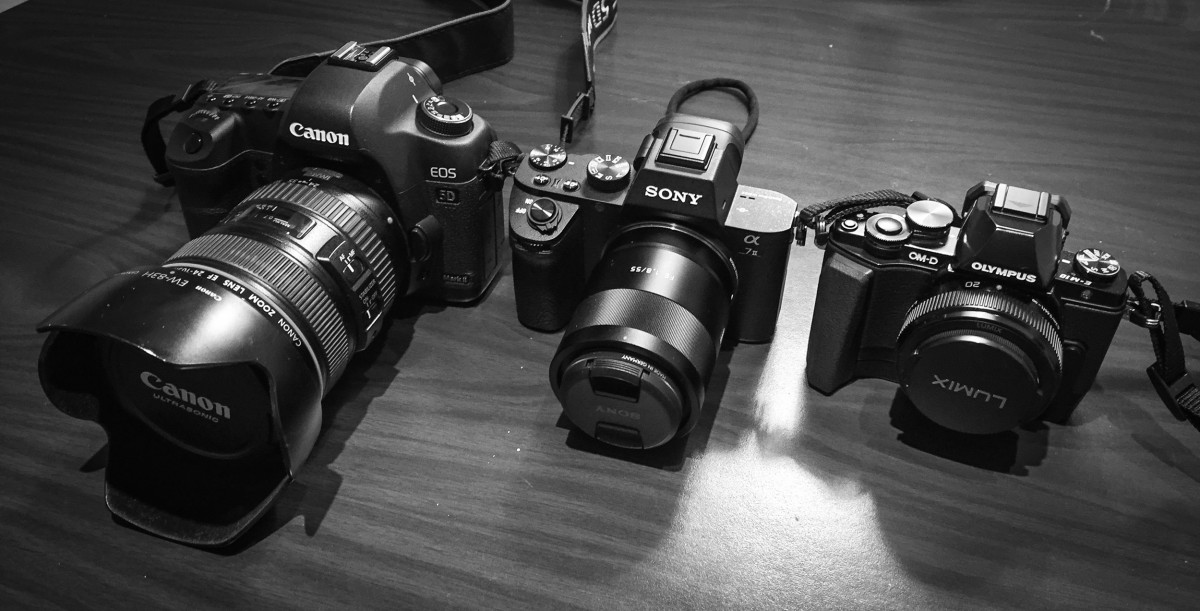
2. It’s not a real camera
Oh I’ve heard that many times, “it’s too small”, “it looks like a ugly child of …..” etc. etc.
One could say the same from the Fuji line of cameras, they are small and they look very vintage, but somehow people love those cameras (me included, and silently I still hope Sony will one day release a silver top), any way back on the subject of “it’s not a real camera”.
When we look at the form factor of a Canon/Nikon body you are right, but…… aren’t those incredibly big and bulky? when we look back at the old cameras like the Leica R, Minolta, Canon, Nikon, Pentax, Praktica etc. they were all slightly smaller than the new modern day DSLRs, the Sony A7RII is indeed not a huge camera, but does that make it a “Not real camera?” for me a real camera is the one that does everything I need, shoot RAW, have all the settings I need and delivers me professional performance….. well it does all that and in a smaller body and when traveling…. well that’s a win situation.
I do remember that a lot of people raved about the Fuji and Olympus bodies, “oh it saves so much on size”, “Oh it so much lighter, awesome” and people were willing to make some sacrifices on image quality, lens choice etc because…. “it was such a nice and handy body”. Then again those cameras didn’t threaten the big ones 😀
3. There is no lens choice
Well you must be living under a rock when you say that, or (and this is probably the case) you didn’t read the stuff you should have read. The selection for Sony is HUGE, and I mean HUGE, in fact I think there is no brand out there that has so many lenses. They do however have one trick up their sleeve that some people see as a “deal breaker” but I see as very positive. For almost all lenses ever build you can get so called convertors which make these lenses work with the Sony bodies. Because the distance between the mount and the sensor is so short with the E mount this actually is pretty easy for manufacturers and also makes this possible. Now the lenses like M42, Leica M, Leica R etc. will all be manual focus of course and manual aperture (just as they worked on their native bodies), but Sony also delivers two convertors called the LA-EA3 and LA-EA4 which will make it possible to mount ANY A-mount Sony lens to the E-mount body WITHOUT any loss of functionality or speed (in fact with both convertors these lenses work faster and better on the A7RII than on my A99).
According to some the use of convertors is not a real solution…… this I can only explain as “you have to have a negative opinion” I find it absolutely genius that I don’t have to re-buy my lenses because I switched system, like for example Canon has with their cropped lenses and full frame lenses.
Now let’s look at native lenses:
Sony has a pretty impressive line up with Sony-Zeiss lenses (in fact it was the only system where Zeiss actually had autofocus), most of these lenses are indeed in the A-mount but E-mount lenses are appearing VERY rapidly now, I don’t see a problem however with just buying A mount lenses, I don’t own E-mount lenses and just always leave an LA-EA3 connected to the body where I mount my lenses on, and when I need my contrast detection (for the older lenses like Minolta) I will just mount the LA-EA4 convertor, very easy and no trouble at all.
Realize also that most of the Minolta AF lenses work on the A and E mount bodies and have full control over Aperture and Focus we could call them native lenses (Sony is in fact Minolta). There are a few lenses (2 of which I know) that don’t work and those are the lenses with motorzoom (who ever thought of that should be punished), and don’t say that those lenses are inferior, in fact I own quite some Minolta glass and can tell you that some of them outperform the Canon L glass I replaced.
Of course we also have Samyang, Sigma and Tamron who for most of their lenses (especially the newer ones) have Sony lens mount versions.
And look at old the old glass like M42, Leica R, Leica M etc. etc. they all have 19.00-39.00 US convertors that make the lenses work like a charm, which makes the Sony actually a platform that works better with Leica R/M glass than the Leica itself because it has Image stabilization build in and and EVF which makes Manual Focus a breeze (next topic).
Oh and one cool detail…. if you use Canon glass you will be “delighted” to hear that metabones sells an adaptor that makes it possible for a lot of Canon lenses (I believe later than 2006 but they are fine tuning the adaptor) to use the lens on the Sony bodies, and the first results are actually impressive with focus speeds slightly faster than on the 5D series, yep you read this correctly… it’s faster than on Canon itself, isn’t that cool.
Oh and one more thing I like to add…. how many lenses do you really need?
If I look at myself I use :
Sigma 12-24 / Sony 24-70 f2.8 / Sony 70-200 f2.8 / Sony 70-400
Primes : Minolta 50 1.4 / Minolta 85 1.4 / Minolta 135 f2.8
And a fine collection of M42 and Leica R glass plus some lens babies
And there is a lot more to choose from but as I can see it every corner is covered, although I’m still hunting for a cool full frame fish eye in the 8mm range.
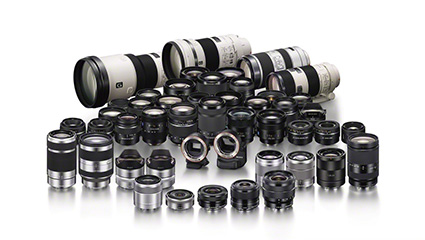
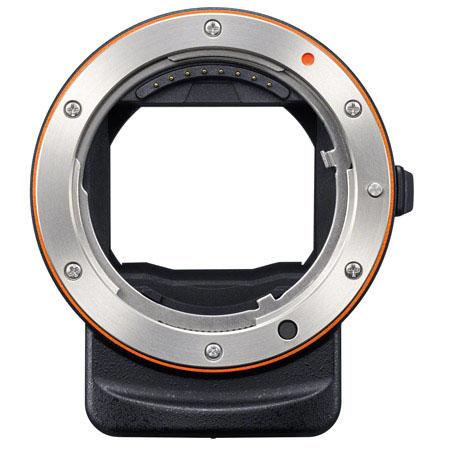
4. Stupid EVF
Also a much heard remark. The fun thing is that this is often from people who never worked with a GOOD EVF, yeah the EVFs from the past were not perfect, some were even VERY bad and lagged like crazy sometimes, but times change, the new A7RII for example has the biggest viewfinder on the market (beating all DSLRs with OVFs), and it’s BRIGHT and SHARP and it’s fast, I can without any problem track a bird in flight or a soccer player, there will of course always be someone who will ask if I can track a speeding bullet…. yeah well….. if you need to do that good luck with any camera.
So why am I over the moon with an EVF?
Trust me the first few weeks I wanted to rip it out and replace it with an OVF (at that point I was using the A99 which doesn’t have an EVF nearly as good as the A7RII) but very quickly I realized something.
The most important thing is getting the shot right?
Of course with an OVF I see the world as it is, and with an EVF I see a digital “projection” which isn’t as “good” or “Dynamic” as the OVF, but do I walk around all day with the camera glued to my eyes? do I experience my holiday with the camera in front of my eyes 24/7? no of course not, when you want to take a picture you pick up the camera and you compose and shoot and you take it away.
Maybe the OVF shows me the world better, but with the EVF I can see a lot more information, video guys already have been using this for years, ask them if they would prefer shooting with an OVF, I think most of them will tell you that they need their Zebras and Peaking information, they are used to this information and they love shooting with that information. We as photographers are not “yet” used to this but I can tell you in all honesty, If you work with an EVF for a week you will probably never wanna go back, the instant feedback of the scene is priceless, if something is not correct just quickly correct it with the exposure compensation and you’re all set for the perfect exposure, want to add strobes to a darker sky, also no problem, just mix the ambient light in the viewfinder to your liking and use your strobe to fill in the rest, you already know the aperture (you don’t have to meter and calculate the background any more with reflective metering because you can literally see what you’re doing).
And don’t even start for our manual focus guys… shooting manual focus on f2.8 with a normal OVF is almost impossible, you will need another focus glass and those are not perfect when you switch back to AF, with an EVF you just use focus peaking and you can even zoom in to 100% and a REAL closeup to really fine tune the focus.
And what about shooting in the dark and focussing?
With an OVF you see the world as it is… so if you’re in a dark area everything will be dark, with an EVF you can actually see shadow detail and you can really pinpoint the focus, yeah it’s different than real life…. but I do get the shots much much quicker and easier, when I want real life I take the camera away from my eyes 😀
5. It EATS batteries
Yep, can’t argue with that.
But I’ve also read remarks like “it’s like a countdown”, “In the middle of a wedding you’re out of power, so frustrating” etc. etc.
Well let me put it this way, if you EVER on ANY camera run out of power in a moment you don’t want to…. it’s your own fault, every system has a perfect countdown now a days, so if you see your batteries hit that 10% mark just switch batteries when you have a spare minute, and when you are like me and you use a grip just run down battery 1, and while battery 2 is being used switch out battery 1 whenever you have time, so that second remark is just plain user fault.
Now the countdown, is it really that bad.
Well yes and no.
Yes, it runs down batteries much faster than the modern Canons (I can only speak of Canon) but those were like magic, I once did almost an entire trip with only using 2 batteries, that’s like magic.
And No,
During our trip in San Francisco I managed to get app 650 shots out of my grip this was with everything on and chimping and using wifi and NFC enabled (always fun to beam images to your iPhone for sharing) If you are shooting a wedding calculate between 1000-1200 shots on two batteries if you turn the camera off in between series. We always travel with 3 batteries, two in the grip and one on spare and I never ever ran out of juice, in New York I once ended up with 2 empty batteries and the third one on 50% but this was a full day walking the streets and ending at night in the hotel and well New York…. I shoot way more there than anywhere so I think that whole battery thing is not as bad, but indeed it’s a different system and that takes more batteries, it’s just something you have to get used to….. remember that your iPhone/Android also only last one day on it’s battery and older telephones could keep up for a week or 2-3, but the iPhones/Androids are used totally different.
If you want to save a lot of power.. just turn the airplane mode on and it will disconnect wifi and NFC and save a lot of power.
6. It’s useless in the studio
Oh I’ve heard this one A LOT, and I can only say one thing…. RTFM
There is a setting in the camera that controls the EVF to a “See What You Get” and what I call “the OVF emulator plus” where it will always show you the “balanced” image of your scene. That last one is of course the one you use in the studio and you will not see a black screen 😀
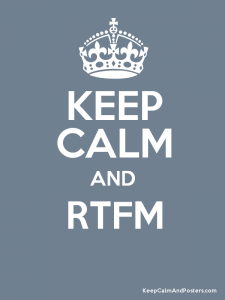
7. There is no small flash system
True and not True.
True, Sony has a great set of small flashes but if you want to use them off camera… well it’s not perfect.
Not True, just switch to Phottix and you have a great controller (called the Odin) and you have a display on your camera where you can control your strobes via the triggers via radio and if you buy the Phottix Mitros+ strobes you don’t even need a receiver (it’s build in the strobes).
With Canon I used pocket wizard which I liked but when I switched to the RT series I was hooked on the display and the ease of setup, so when I found the Phottix Odin for Sony I ordered it straight away and never looked back. It just works flawless in both ETTL/HSS and Manual and zoom. So absolutely a non issue.
8. It doesn’t tether like Canon/Nikon
Well this is also not true.
Capture One has a free solution especially for Sony that works like a charm, and for Lightroom you can buy several third party plugins that make tethering into Lightroom feel like it’s natively supported.
9. Raw files are not supported as quickly as Canon or Nikon
Absolutely not true anymore, the A7RII was actually already supported in Lightroom and Capture One before the camera was officially released.
10. Quality of the lenses is not as good
Absolutely not true.
Remember that Sony and Zeiss work together and Zeiss is well known for their awesome quality. In fact if you look at the DxO lens list at the moment there are 3 Sony lenses in the top 10 of best lenses ever and at the moment the 90mm is actually the best lens ever tested even beating the Zeiss alternative. Also the Minolta lenses that can be bought very cheap are incredibly good.
11. Price
When nothing else works we can always nitpick on price…….
Yep, absolutely true, I won’t argue with you on this one.
The new lenses are not cheap, the new bodies are not cheap…. but hey…. it outperforms cameras that are in the same league pricewise, and the lenses outperform also all the other lenses in that price range. I think you just have to realize that this is not a hobby camera anymore (A7RII) but a real professional full frame camera with high-end specs and the price to match, same goes for lenses. And indeed those lenses are pricy. But you can always buy the awesome Minolta AF lenses for anything between 200-900 US online and score some glass that is just as good as the Zeiss counterparts at first glance but will save you 1000.00, so it’s a great start.
12. Support
Yep you got me there, without a doubt. Sony has an awesome system but their support… sorry Sony it just simply sucks. Try to get pro support, it’s…. well non excitant, and I know they are working on it, but it really has to start working now because this is the only thing to be honest that really hurts the brand at the moment and that COULD stick for years to come.
On and I almost forgot:
13. Sony doesn’t use a normal hotshoe?
Well let me first ask.. “what is a normal hotshoe?”
NO brand uses a “normal” hotshoe. They all add something of their own, and so does Sony. However this is not what is meant. In the past Sony used the Minolta hotshoe where the other brands used the standardized hotshoe, but that’s in the past (there were convertors), now a days (actually ever since I’ve been shooting Sony) Sony uses a normal hotshoe and all your triggers that are not brand related will fit, so skyports etc. will work just fine.
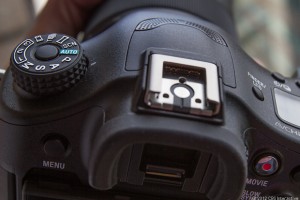
14. Sony RAWs are not RAW?
excuse me?
Oh you mean that the Sony files are not REAL 14 bit files?
Yep that’s true, and you know how they found out?
Not because the images look bad… no because they simply looked at the files, and the people that saw this… well they had another point 😀
Now don’t get me wrong, I love to have every bit as clean as a file as I can get, and if I can get a 16bits files instead of an 14 bits file I would take it, but…. do you see the difference? do you really?
The files I get from the A7R and A7RII are incredibly dynamic (they even outperform my medium format in dynamic range), they are smooth as butter and I can push them in Photoshop from here to infinity (and beyond).
Taking this last point (14) as start for my conclusion.
People should not read online about things that they don’t check for themselves, or that they experience themselves. Always remember that every reviewer has an angle (me too, although with me it’s never financial) and that all reviewers (including me) are people, and people when they love a brand will always be VERY critical to another brand.
You didn’t see me going into the ease of use, like the menus (this is something that is much better now but still is different from Nikon or Canon, but hey those are also different from each other, and I find Canon the easiest, then Sony and Nikon I always have to search and look), the colors etc.
You also didn’t hear me say anything about frames per second… yeah it doesn’t do 15fps but I don’t need that, if you need that you have to get a camera with less megapixels.
You also didn’t hear me say anything about autofocus speed, for me it’s blazingly fast especially with the LA-EA3 convertor it BLEW me away, but maybe if you use a machine that can really check the time the Canon 1Dx is 0.004 ms faster, I don’t know and I don’t care, if I aim on something it needs to lock as soon as I’m ready to press the shutter, and it does, the A7r sometimes hunted, but the A7RII is just very very snappy. And to continue on AF also realize that with the Phase Detection AF Sony now covers almost the whole sensor with 399 focus points so if you have your subject in focus you will not loose it anymore, plus with Phase Detection AF the issue of front and back focus is history (you’re now focussing on the image). Also with video this is a big plus (the Phase detection points), you really can “lock” on your subject and use object tracking to keep it in focus.
I also skipped on video, I recorded some 4K material and for me it looks awesome, but I’m not a video guy. If I can record 4K on the card I’m more than happy so I can add it to Annewieks material that is all filmed on real 4K cameras, and I don’t need a separate external HDD so I’m happy.
These last topics are all topics that are open for discussion, for some people the AF is so important they would skip on Sony and buy a 1Dx and they are probably right, in this blogpost however I wanted to take away some of the “misinformation” that is now spread about the system in general. And I hope that you liked it and value it, not as a Sony fanboy story but purely as the information as it was meant, because I might be shooting Sony I’m far from a fanboy…. now get that Pro support up and running and have a good ambassador program and I might become a real fan boy 😀
Like this:
Like Loading...







You must be logged in to post a comment.